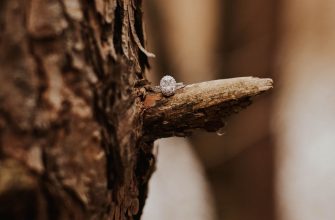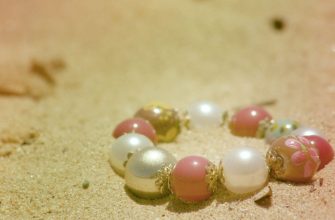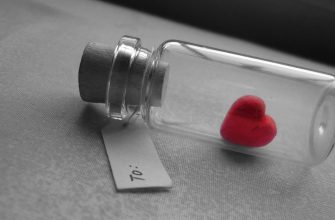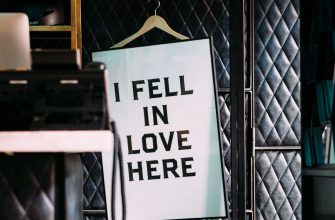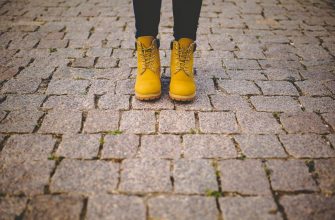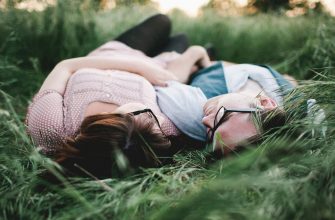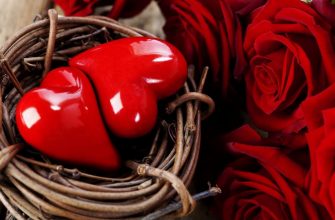Frida Kahlo
Frida Kahlo Biography

Considered one of Mexico’s greatest artists, Frida Kahlo was born on July 6, 1907 in Coyocoan, Mexico City, Mexico. She grew up in the family’s home where was later referred to as the Blue House or Casa Azul. Her father is a German descendant and photographer. He immigrated to Mexico where he met and married her mother Matilde. Her mother is half Amerindian and half Spanish. Frida Kahlo has two older sisters and one younger sister.
Frida Kahlo has poor health in her childhood. She contracted polio at the age of 6 and had to be bedridden for nine months. This disease caused her right leg and foot to grow much thinner than her left one. She limped after she recovered from polio. She has been wearing long skirts to cover that for the rest of her life. Her father encouraged her to do lots of sports to help her recover. She played soccer, went swimming, and even did wrestle, which is very unusual at that time for a girl. She has kept a very close relationship with her father for her whole life.
Frida Kahlo attended the renowned National Preparatory School in Mexico City in the year of 1922. There are only thirty-five female students enrolled in that school and she soon became famous for her outspokenness and bravery. At this school she first met the famous Mexican muralist Diego Rivera for the first time. Rivera at that time was working on a mural called The Creation on the school campus. Frida often watched it and she told a friend she will marry him someday.
In the same year, Kahlo joined a gang of students who shared similar political and intellectual views. She fell in love with the leader Alejandro Gomez Arias. On a September afternoon when she traveled with Gomez Arias on a bus the tragic accident happened. The bus collided with a streetcar and Frida Kahlo was seriously injured. A steel handrail impaled her through the hip. Her spine and pelvis are fractured and this accident left her in a great deal of pain, both physically and physiologically.
She was injured so badly and had to stay in the Red Cross Hospital in Mexico City for several weeks. After that, she returned home for further recovery. She had to wear full-body cast for three months. To kill the time and alleviate the pain, she started painting and finished her first self-portrait the following year. Frida Kahlo once said, «I paint myself because I am often alone and I am the subject I know best». Her parents encouraged her to paint and made a special easel made for her so she could paint in bed. They also gave her brushes and boxes of paints.
Frida Kahlo reconnected with Rivera in 1928. She asked him to evaluate her work and he encouraged her. The two soon started the romantic relationship. Despite her mother’s objection, Frida and Diego Rivera got married in the next year. During their earlier years as a married couple, Frida had to move a lot based on Diego’s work. In 1930, they lived in San Francisco, California. Then they moved to New York City for Rivera’s artwork show at Museum of Modern Art. They later moved to Detroit while Diego Rivera worked for Detroit Institute of Arts.
In 1932, Kahlo added more realistic and surrealistic components in her painting style. In the painting titled Henry Ford Hospital(1932), Frida Kahlo lied on a hospital bed naked and was surrounded with a few things floating around, which includes a fetus, a flower, a pelvis, a snail, all connected by veins. This painting was an expression of her feelings about her second miscarriage. It is as personal as her other self-portraits.
In 1933, Kahlo was living in New York City with her husband Diego Rivera. Rivera was commissioned by Nelson Rockefeller to create a mural named as Man at the Crossroads at Rockefeller Center. Rivera tried to include Vladimir Lenin in the painting, who is a communist leader. Rockefeller stopped his work and that part was painted over. The couple had to move back to Mexico after this incident. They returned and live in San Angel, Mexico.
Frida Kahlo and Diego Rivera’s marriage is not a usual one. They had been keeping separate homes and studios for all those years. Diego had so many affairs and one of that was with Kahlo’s sister Cristina. Frida Kahlo was so sad and she cut off her long hair to show her desperation to the betrayal. She has longed for children but she cannot bear one due to the bus accident. She was heartbroken when she experienced a second miscarriage in 1934. Kahlo and Rivera have been separated a few times but they always went back together. In 1937 they helped Leon Trotsky and his wife Natalia. Leon Trotsky is an exiled communist and rival of Soviet leader Joseph Stalin. Kahlo and Rivera welcomed the couple together and let them stay at her Blue House. Kahlo also had a brief affair with Leon Trotsky when the couple stayed at her house.

In 1938, Frida Kahlo became a friend of Andre Breton, who is one of the primary figures of the Surrealism movement. Frida said she never considered herself as a Surrealist «until André Breton came to Mexico and told me I was one.» She also wrote, «Really I do not know whether my paintings are surrealist or not, but I do know that they are the frankest expression of myself». «Since my subjects have always been my sensations, my states of mind and the profound reactions that life has been producing in me, I have frequently objectified all this in figures of myself, which were the most sincere and real thing that I could do in order to express what I felt inside and outside of myself.»
In the same year, she had an exhibition at New York City gallery. She sold some of her paintings and got two commissions. One of that is from Clare Boothe Luce to paint her friend Dorothy Hale who committed suicide. She painted The Suicide of Dorothy Hale (1939), which tells the story of Dorothy’s tragic leap. The patron Luce was horrified and almost destroyed this painting.
The next year, 1939, Kahlo was invited by Andre Breton and went to Paris. Her works are exhibited there and she is befriended with artists such as Marc Chagall, Piet Mondrian, and Pablo Picasso. She and Rivera got divorced that year and she painted one of her most famous paintings, The Two Fridas(1939).
But soon Frida Kahlo and Diego Rivera remarried in 1940. The second marriage is about the same as the first one. They still keep separate lives and houses. Both of them had infidelities with other people during the marriage. Kahlo received a commission from the Mexican government for five portraits of important Mexican women in 1941, but she was unable to finish the project. She lost her beloved father that year and continued to suffer from chronic health problems. Despite her personal challenges, her work continued to grow in popularity and was included in numerous group shows around this time.
In the year of 1944, Frida Kahlo painted one of her most famous portraits, The Broken Column. In this painting, she depicted herself naked and split down the middle. Her spine is shattered like a column. She wears a surgical brace and there are nails all through her body, which is the indication of the consistent pain she went through. In this painting, Frida expressed her physical challenges through her art. During that time, she had a few surgeries and had to wear special corsets to protect her back spine. She seeks lots of medical treatment for her chronic pain but nothing really worked.
Her health condition has been worsening in 1950. That year she was diagnosed with gangrene in her right foot. She became bedridden for the next nine month and had to stay in hospital and had several surgeries. But with great persistence, Frida Kahlo continued to work and paint. In the year of 1953, she had a solo exhibition in Mexican. Although she had limited mobility at that time, she showed up on the exhibition’s opening ceremony. She arrived by ambulance, and welcomed the attendees, celebrated the ceremony in a bed the gallery set up for her. A few months later, she had to accept another surgery. Part of her right leg got amputated to stop the gangrene.
With the poor physical condition, she is also deeply depressed. She even had an inclination for suicide. Frida Kahlo has been out and in hospital during that year. But despite her health issues, she has been active with the political movement. She showed up at the demonstration against US-backed overthrow of President Jacobo Arbenz of Guatemala on July 2. This is her last public appearance. About one week after her 47th birthday, Frida Kahlo passed away at her beloved Bule House. She was publicly reported to die of a pulmonary embolism, but there is speculation which was saying she died of a possible suicide.
Frida Kahlo’s fame has been growing after her death. Her Blue House was opened as a museum in the year of 1958. In the 1970s the interest in her work and life is renewed due to the feminist movement since she was viewed as an icon of female creativity. In 1983, Hayden Herrera published his book on her, A Biography of Frida Kahlo, which drew more attention from the public to this great artist. In the year of 2002, a movie named Frida was released, staring alma Hayek as Frida Kahlo and Alfred Molina as Diego Rivera. This movie was nominated for six Academy Awards and won for Best Makeup and Original Score.
Frida Kahlo
Our editors will review what you’ve submitted and determine whether to revise the article.
Frida Kahlo, in full Frida Kahlo de Rivera, original name Magdalena Carmen Frieda Kahlo y Calderón, (born July 6, 1907, Coyoacán, Mexico—died July 13, 1954, Coyoacán), Mexican painter best known for her uncompromising and brilliantly coloured self-portraits that deal with such themes as identity, the human body, and death. Although she denied the connection, she is often identified as a Surrealist. In addition to her work, Kahlo was known for her tumultuous relationship with muralist Diego Rivera (married 1929, divorced 1939, remarried 1940).
Who is Frida Kahlo?
Frida Kahlo was a Mexican painter best known for her uncompromising and brilliantly colored self-portraits that deal with such themes as identity, the human body, and death. Although she denied the connection, she is often identified as a Surrealist. She was also known for her tumultuous relationship with muralist Diego Rivera.
What tragic accident happened to Frida Kahlo?
In 1925 Frida Kahlo was involved in a bus accident, which so seriously injured her that she had to undergo more than 30 medical operations in her lifetime. During her slow recovery, Kahlo taught herself to paint and studied the art of the Old Masters.
When did Frida Kahlo paint Self-Portrait Wearing a Velvet Dress?
Kahlo painted Self-Portrait Wearing a Velvet Dress, a regal waist-length portrait of herself against a dark background with roiling stylized waves, in 1926. Although the painting is fairly abstract, Kahlo’s soft modeling of her face shows her interest in realism.
Which of Frida Kahlo’s paintings is displayed in the Louvre?
The Louvre acquired Frida Kahlo’s work The Frame (c. 1938), making her the first 20th-century Mexican artist to be included in the museum’s collection.
When was the Frida Kahlo Museum established?
After Kahlo’s death in 1954, Diego Rivera had redesigned Frida Kahlo’s childhood home, La Casa Azul (“the Blue House”), in Coyoacán, as a museum dedicated to her life. The Frida Kahlo Museum opened to the public in 1958, a year after Rivera’s death.
Early years and bus accident
Kahlo was born to a German father of Hungarian descent and a Mexican mother of Spanish and Native American descent. Later, during her artistic career, Kahlo explored her identity by frequently depicting her ancestry as binary opposites: the colonial European side and the indigenous Mexican side. As a child, she suffered a bout of polio that left her with a slight limp, a chronic ailment she would endure throughout her life. Kahlo was especially close to her father, who was a professional photographer, and she frequently assisted him in his studio, where she acquired a sharp eye for detail. Although Kahlo took some drawing classes, she was more interested in science, and in 1922 she entered the National Preparatory School in Mexico City with an interest in eventually studying medicine. While there she met Rivera, who was working on a mural for the school’s auditorium.
In 1925 Kahlo was involved in a bus accident, which so seriously injured her that she had to undergo more than 30 medical operations in her lifetime. During her slow recovery, Kahlo taught herself to paint, and she read frequently, studying the art of the Old Masters. In one of her early paintings, Self-Portrait Wearing a Velvet Dress (1926), Kahlo painted a regal waist-length portrait of herself against a dark background with roiling stylized waves. Although the painting is fairly abstract, Kahlo’s soft modeling of her face shows her interest in realism. The stoic gaze so prevalent in her later art is already evident, and the exaggeratedly long neck and fingers reveal her interest in the Mannerist painter Il Bronzino. After her convalescence, Kahlo joined the Mexican Communist Party (PCM), where she met Rivera once again. She showed him some of her work, and he encouraged her to continue to paint.
Marriage to Diego Rivera and travels to the United States
Soon after marrying Rivera in 1929, Kahlo changed her personal and painting style. She began to wear the traditional Tehuana dress that became her trademark. It consisted of a flowered headdress, a loose blouse, gold jewelry, and a long ruffled skirt. Her painting Frieda and Diego Rivera (1931) shows not only her new attire but also her new interest in Mexican folk art. The subjects are flatter and more abstract than those in her previous work. The towering Rivera stands to the left, holding a palette and brushes, the objects of his profession. He appears as an important artist, while Kahlo, who is petite and demure beside him, with her hand in his and with darker skin than in her earlier work, conveys the role she presumed he wanted: a traditional Mexican wife.
Kahlo painted that work while traveling in the United States (1930–33) with Rivera, who had received commissions for murals from several cities. During this time, she endured a couple of difficult pregnancies that ended prematurely. After suffering a miscarriage in Detroit and later the death of her mother, Kahlo painted some of her most-harrowing works. In Henry Ford Hospital (1932) Kahlo depicted herself hemorrhaging on a hospital bed amid a barren landscape, and in My Birth (1932) she painted a rather taboo scene of a shrouded woman giving birth.
First solo exhibitions
In 1933 Kahlo and Rivera returned to Mexico, where they lived in a newly constructed house comprising separate individual spaces joined by a bridge. The residence became a gathering spot for artists and political activists, and the couple hosted the likes of Leon Trotsky and André Breton, a leading Surrealist who championed Kahlo’s work. Breton wrote the introduction to the brochure for her first solo exhibition, describing her as a self-taught Surrealist. The exhibition was held at the Julien Levy Gallery in New York in 1938, and it was a great success. The following year Kahlo traveled to Paris to show her work. There she met more Surrealists, including Marcel Duchamp, the only member she reportedly respected. The Louvre also acquired one of her works, The Frame (c. 1938), making Kahlo the first 20th-century Mexican artist to be included in the museum’s collection.
The Two Fridas and other later works
By the mid-1930s numerous extramarital affairs—notably that of Rivera with Kahlo’s younger sister and those of Kahlo with several men and women—had undermined their marriage, and the two divorced in 1939. That same year Kahlo painted some of her most famous works, including The Two Fridas. The unusually large canvas (5.69 × 5.68 feet [1.74 × 1.73 metres]) shows twin figures holding hands, each figure representing an opposing side of Kahlo. The figure to the left, dressed in a European-style wedding dress, is the side that Rivera purportedly rejected, and the figure to the right, dressed in Tehuana attire, is the side Rivera loved best. The full heart of the indigenous Kahlo is on display, and from it an artery leads to a miniature portrait of Rivera that she holds in her left hand. Another artery connects to the heart of the other Kahlo, which is fully exposed and reveals the anatomy within. The end of the artery is cut, and the European Kahlo holds a surgical instrument seemingly to stem the flow of blood that drips onto her white dress.
Kahlo reconciled with Rivera in 1940, and the couple moved into her childhood home, La Casa Azul (“the Blue House”), in Coyoacán. In 1943 she was appointed a professor of painting at La Esmeralda, the Education Ministry’s School of Fine Arts. Never fully well, Kahlo began to further decline in health, and she frequently turned to alcohol and drugs for relief. Nonetheless, she continued to be productive during the 1940s. She painted numerous self-portraits with varying hairstyles, clothing, and iconography, always showing herself with an impassive, steadfast gaze, for which she became famous. Kahlo underwent several surgeries in the late 1940s and early ’50s, often with prolonged hospital stays. Toward the end of her life, she required assistance with walking. She appears in Self-Portrait with Portrait of Dr. Farill (1951) seated in a wheelchair. Her ill health caused her to attend her first solo exhibition in Mexico in 1953 lying on a bed. She died in La Casa Azul a year later, the official cause documented as a pulmonary embolism.
The Frida Kahlo Museum and posthumous reputation
After Kahlo’s death, Rivera had La Casa Azul redesigned as a museum dedicated to her life. The Frida Kahlo Museum opened to the public in 1958, a year after Rivera’s death. The Diary of Frida Kahlo, covering the years 1944–54, and The Letters of Frida Kahlo were both published in 1995. Although Kahlo had achieved success as an artist in her lifetime, her posthumous reputation steadily grew from the 1970s and reached what some critics called “Fridamania” by the 21st century. She is perhaps one of the best-known artists of the 20th century. The dramatic parts of her life—the debilitating injury from the bus accident, the turbulent marriage, the sensational love affairs, and the heavy drinking and drug use—inspired many books and movies in the decades following her death.
Frida Kahlo
Who Was Frida Kahlo?
Artist Frida Kahlo was considered one of Mexico’s greatest artists who began painting mostly self-portraits after she was severely injured in a bus accident. Kahlo later became politically active and married fellow communist artist Diego Rivera in 1929. She exhibited her paintings in Paris and Mexico before her death in 1954.
Family, Education and Early Life
Kahlo was born Magdalena Carmen Frieda Kahlo y Calderón on July 6, 1907, in Coyoacán, Mexico City, Mexico.
Kahlo’s father, Wilhelm (also called Guillermo), was a German photographer who had immigrated to Mexico where he met and married her mother Matilde. She had two older sisters, Matilde and Adriana, and her younger sister, Cristina, was born the year after Kahlo.
Around the age of six, Kahlo contracted polio, which caused her to be bedridden for nine months. While she recovered from the illness, she limped when she walked because the disease had damaged her right leg and foot. Her father encouraged her to play soccer, go swimming, and even wrestle — highly unusual moves for a girl at the time — to help aid in her recovery.
In 1922, Kahlo enrolled at the renowned National Preparatory School. She was one of the few female students to attend the school, and she became known for her jovial spirit and her love of colorful, traditional clothes and jewelry.
While at school, Kahlo hung out with a group of politically and intellectually like-minded students. Becoming more politically active, Kahlo joined the Young Communist League and the Mexican Communist Party.
Frida Kahlo used surrealism, realism and traditional Mexican elements in her paintings
» data-full-height=»2000″ data-full-src=»https://www.biography.com/.image/c_limit%2Ccs_srgb%2Cfl_progressive%2Ch_2000%2Cq_auto:good%2Cw_2000/MTcyMDM1OTMwNTMyNjE5Njgz/gettyimages-517351472.jpg» data-full-width=»1522″ data-image-id=»ci026331c4a00025a3″ data-image-slug=»GettyImages-517351472″ data-public-id=»MTcyMDM1OTMwNTMyNjE5Njgz» data-source-name=»Photo: Bettmann Archive/Getty Images»>
While enrolled in a premedical program at the Escuela Nacional Preparatoria in Mexico City, Frida met her future husband, famed mural painter Diego Rivera.
» data-full-height=»2000″ data-full-src=»https://www.biography.com/.image/c_limit%2Ccs_srgb%2Cfl_progressive%2Ch_2000%2Cq_auto:good%2Cw_2000/MTcyMDM2MDE5MTE2MzE5ODc5/gettyimages-515450440.jpg» data-full-width=»1523″ data-image-id=»ci026331d9b00025a3″ data-image-slug=»GettyImages-515450440″ data-public-id=»MTcyMDM2MDE5MTE2MzE5ODc5″ data-source-name=»Photo: Bettmann Archive/Getty Images»>
Kahlo’s bold artwork and strong political views made Frida a symbol of feminism.
» data-full-height=»2000″ data-full-src=»https://www.biography.com/.image/c_limit%2Ccs_srgb%2Cfl_progressive%2Ch_2000%2Cq_auto:good%2Cw_2000/MTE4MDAzNDEwNTgwMTEyOTEw/art-personalities-pic-circa-1930s-frida-kahlo-mexican-born-artistpainter-c1907-1954.jpg» data-full-width=»1332″ data-image-id=»ci01ac7ce9da36860c» data-image-slug=»Art, Personalities, pic: circa 1930»s, Frida Kahlo, Mexican born artist/painter (c1907-1954)» data-public-id=»MTE4MDAzNDEwNTgwMTEyOTEw» data-source-name=»Photo: Popperfoto/Getty Images»>
Frida Kahlo and Hungarian-born photographer Nickolas Muray had an affair during the 1930s. His 1938 portrait of Kahlo became one of his most famous works.
» data-full-height=»2000″ data-full-src=»https://www.biography.com/.image/c_limit%2Ccs_srgb%2Cfl_progressive%2Ch_2000%2Cq_auto:good%2Cw_2000/MTE5NTU2MzE2MjY5MjgyODI3/kahlo-frida-muray-nick-raw.jpg» data-full-width=»1507″ data-image-id=»ci01a87e1d6fb9860f» data-image-slug=»kahlo-frida-muray-nick-raw» data-public-id=»MTE5NTU2MzE2MjY5MjgyODI3″ data-source-name=»Photo: Nickolas Muray Photo Archives»>
Frida Kahlo often included monkeys in her paintings, as in this 1938 self-portrait, portraying them as friendly protective pets rather than symbols of lust as believed in Mexican folklore.
» data-full-height=»2000″ data-full-src=»https://www.biography.com/.image/c_limit%2Ccs_srgb%2Cfl_progressive%2Ch_2000%2Cq_auto:good%2Cw_2000/MTcyMDM2MDQ5MTgxMDkxMjM1/dayp41.jpg» data-full-width=»1471″ data-image-id=»ci026331e060002487″ data-image-slug=»DAYP41″ data-public-id=»MTcyMDM2MDQ5MTgxMDkxMjM1″ data-source-name=»Archivart/Alamy Stock Photo»>
Hundreds of people paid their last respects to Frida Kahlo in 1954 as her body lay in state at the Palace of Fine Arts in Mexico City with a communist flag draped over it.
» data-full-height=»2000″ data-full-src=»https://www.biography.com/.image/c_limit%2Ccs_srgb%2Cfl_progressive%2Ch_2000%2Cq_auto:good%2Cw_2000/MTcyMDM2MDQ5MTgxMTU2Nzcx/gettyimages-515549792.jpg» data-full-width=»1924″ data-image-id=»ci026331e0a0002487″ data-image-slug=»GettyImages-515549792″ data-public-id=»MTcyMDM2MDQ5MTgxMTU2Nzcx» data-source-name=»Photo: Bettmann Archive/Getty Images»>
Frida Kahlo’s Life in Photos


Frida Kahlo’s Accident
On September 17, 1925, Kahlo and Alejandro Gómez Arias, a school friend with whom she was romantically involved, were traveling together on a bus when the vehicle collided with a streetcar. As a result of the collision, Kahlo was impaled by a steel handrail, which went into her hip and came out the other side. She suffered several serious injuries as a result, including fractures in her spine and pelvis.
After staying at the Red Cross Hospital in Mexico City for several weeks, Kahlo returned home to recuperate further. She began painting during her recovery and finished her first self-portrait the following year, which she gave to Gómez Arias.
Frida Kahlo’s Marriage to Diego Rivera
In 1929, Kahlo and famed Mexican muralist Diego Rivera married. Kahlo and Rivera first met in 1922 when he went to work on a project at her high school. Kahlo often watched as Rivera created a mural called The Creation in the school’s lecture hall. According to some reports, she told a friend that she would someday have Rivera’s baby.
Kahlo reconnected with Rivera in 1928. He encouraged her artwork, and the two began a relationship. During their early years together, Kahlo often followed Rivera based on where the commissions that Rivera received were. In 1930, they lived in San Francisco, California. They then went to New York City for Rivera’s show at the Museum of Modern Art and later moved to Detroit for Rivera’s commission with the Detroit Institute of Arts.
Kahlo and Rivera’s time in New York City in 1933 was surrounded by controversy. Commissioned by Nelson Rockefeller, Rivera created a mural entitled Man at the Crossroads in the RCA Building at Rockefeller Center. Rockefeller halted the work on the project after Rivera included a portrait of communist leader Vladimir Lenin in the mural, which was later painted over. Months after this incident, the couple returned to Mexico and went to live in San Angel, Mexico.
Never a traditional union, Kahlo and Rivera kept separate, but adjoining homes and studios in San Angel. She was saddened by his many infidelities, including an affair with her sister Cristina. In response to this familial betrayal, Kahlo cut off most of her trademark long dark hair. Desperately wanting to have a child, she again experienced heartbreak when she miscarried in 1934.
Kahlo and Rivera went through periods of separation, but they joined together to help exiled Soviet communist Leon Trotsky and his wife Natalia in 1937. The Trotskys came to stay with them at the Blue House (Kahlo’s childhood home) for a time in 1937 as Trotsky had received asylum in Mexico. Once a rival of Soviet leader Joseph Stalin, Trotsky feared that he would be assassinated by his old nemesis. Kahlo and Trotsky reportedly had a brief affair during this time.
Kahlo divorced Rivera in 1939. They did not stay divorced for long, remarrying in 1940. The couple continued to lead largely separate lives, both becoming involved with other people over the years.
While taking a break during the “fake trial” of Russian revolutionary Leon Trotsky, Kahlo and Rivera share a lighthearted pause.
» data-full-height=»1508″ data-full-src=»https://www.biography.com/.image/c_limit%2Ccs_srgb%2Cfl_progressive%2Ch_2000%2Cq_auto:good%2Cw_2000/MTYwNTE0NjgzNDQ1NDU0Mzgy/1_during-a-pause-in-the-fake-trial-of-leon-trotsky-diego-rivera-a-mural-painter-and-militant-in-the-mexican-revolutionary-communist-patry-had-let-trotsky-stay-at-his-home-during-his-exile-photo-by-key.jpg» data-full-width=»2000″ data-image-id=»ci023a4341400024ab» data-image-slug=»1_during a pause in the ‘fake trial’ of Leon TROTSKY. Diego RIVERA, a mural painter and militant in the Mexican Revolutionary Communist Patry had let TROTSKY stay at his home during his exile. (Photo by Keystone-France:Gamma-Keystone via Getty Images)» data-public-id=»MTYwNTE0NjgzNDQ1NDU0Mzgy» data-source-name=»Photo: Keystone France/Gamma Keystone via Getty Images» data-title=»Frida Kahlo and Diego Rivera share a laugh»>
Rivera reads while Kahlo works beneath her famous 1939 painting, «The Two Fridas.»
Rivera and Kahlo steal a tender moment with a monkey as it clings to Rivera’s jacket.
Rivera and Kahlo chat as they walk through their stone-statue-lined garden while Kahlo holds a monkey.
Rivera perches amicably on Kahlo’s chair at their home.
» data-full-height=»2000″ data-full-src=»https://www.biography.com/.image/c_limit%2Ccs_srgb%2Cfl_progressive%2Ch_2000%2Cq_auto:good%2Cw_2000/MTYwNTE0NjgzNzEzODg5NDUx/5_diego-rivera-celebrated-artist-and-dissident-communist-who-charged-dec-8-that-german-nazis-and-stalin-communists-were-converging-mexico-into-a-base-of-operations-against-all-of-the-americas.jpg» data-full-width=»1523″ data-image-id=»ci023a4341600024ab» data-image-slug=»5_Diego Rivera, celebrated artist and dissident Communist, who charged, Dec. 8, that German Nazis and Stalin Communists were ‘converging’ Mexico into a base of operations against all of the Americas» data-public-id=»MTYwNTE0NjgzNzEzODg5NDUx» data-source-name=»Photo: Getty Images» data-title=»A quiet moment at home»>
Never without a pet nearby, Rivera and Kahlo stand in front of a historical thatched-roof hut that houses a number of archeological artifacts in Mexico City.
Framed by a doorway, Kahlo and Rivera share a moment of closeness in 1932.
» data-full-height=»2000″ data-full-src=»https://www.biography.com/.image/c_limit%2Ccs_srgb%2Cfl_progressive%2Ch_2000%2Cq_auto:good%2Cw_2000/MTYwNTE0NjgzNzE0MDIwNTIz/7_frieda-and-diego-kahlo-standing-in-doorway-circa-1932-photo-by-fotosearchgetty-images.jpg» data-full-width=»1322″ data-image-id=»ci023a4341900024ab» data-image-slug=»7_Frieda and Diego Kahlo standing in doorway, circa 1932. (Photo by Fotosearch:Getty Images).» data-public-id=»MTYwNTE0NjgzNzE0MDIwNTIz» data-source-name=»Photo: Fotosearch/Getty Images» data-title=»Standing proud»>
Kahlo pets a monkey in Rivera’s arms while the duo stands by a thatch-roofed hut that houses historical artifacts in Mexico City.








